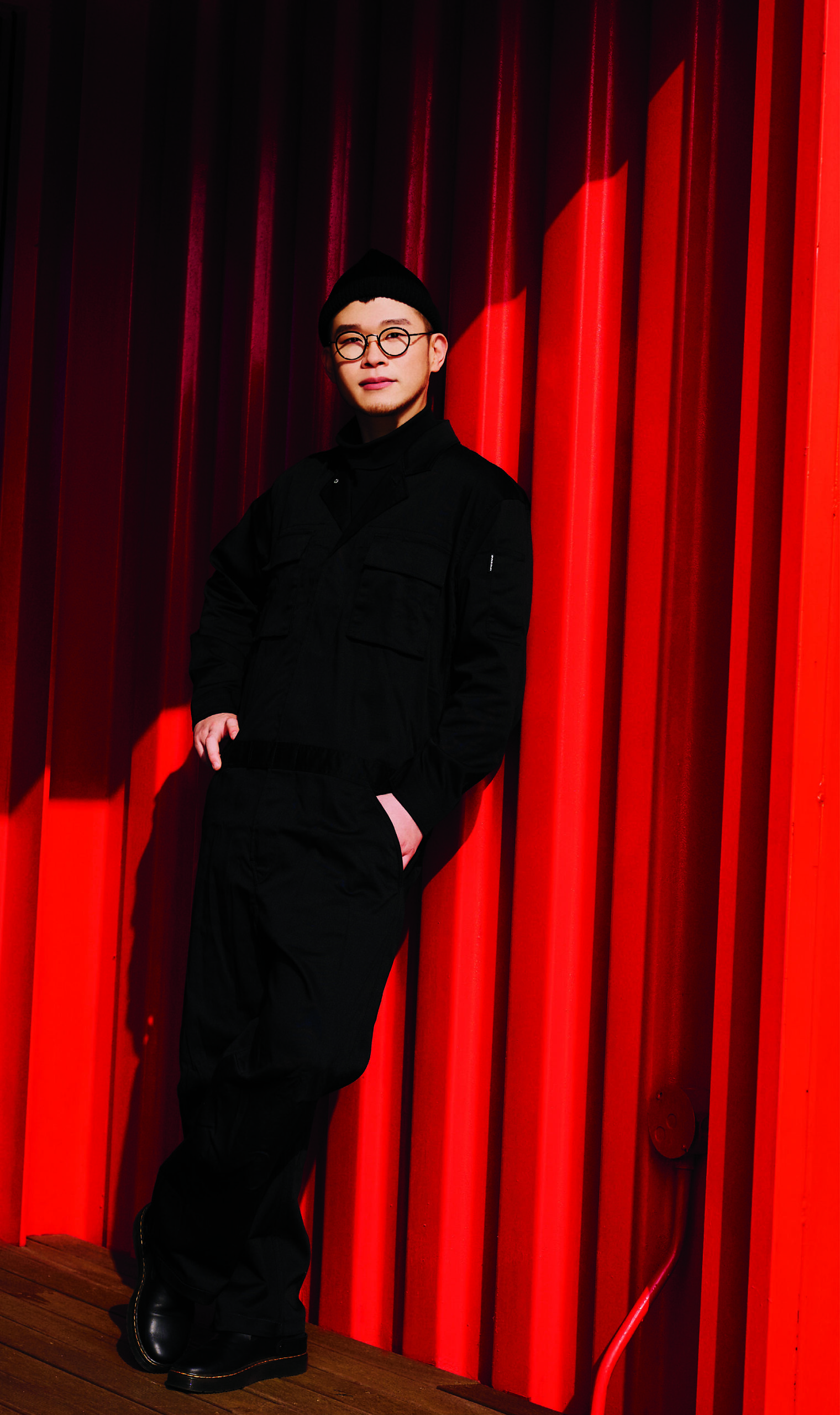ข้อดีอย่างหนึ่งของการรับราชการทหารภาคบังคับของ ยุน ซอกฮยอน ในเกาหลีใต้คือ เขามีเวลาอ่านหนังสือเกี่ยวกับอุตสาหกรรมการออกแบบเป็นเพิ่มมากขึ้น เนื่องจากก่อนเข้ากรมเขาเคยเรียนรู้เกี่ยวกับการออกแบบในวิทยาลัยอยู่แล้ว แต่เขากลับรู้สึกเบื่อหน่ายกับแนวโน้มของหลักสูตรที่มักส่งนักเรียนไปทำงานกับบริษัทใหญ่ๆ อย่างฮุนได “งานออกแบบสไตล์ดัตช์ดึงดูดความสนใจของผม" เขากล่าว “และผมคิดว่า บางทีผมอาจจะต้องหยุดเรียนในเกาหลีใต้แล้วไปเรียนต่อที่ยุโรป"
ระหว่างการค้นคว้าประวัติศาสตร์อันยาวนานของเครื่องปั้นดินเผา ยุนได้ค้นพบ “อ็อทชิล" หรือ “อ็อท" เทคนิคโบราณของเกาหลีที่ใช้น้ำยางจากต้นอ็อทเป็นแล็กเกอร์ธรรมชาติ น้ำมันวานิชนี้จะระเหยไปเมื่อถูกความร้อนสูง ดังนั้นตัวเครื่องปั้นดินเผาเองจึงสามารถนำกลับมาใช้ใหม่ได้ ผลงานชิ้นสุดท้ายของยุน ชื่อว่า Ott/Another Paradigmatic Ceramic – เป็นคอลเลกชันของชาม แจกัน และจานที่เคลือบด้วยแล็กเกอร์ในโทนสีน้ำตาลเข้มและสีดำที่หลากหลาย คอลเลกชันนี้ได้รับรางวัลอันทรงเกียรติอย่างรางวัลเรอเน่ สเมทส์ และบางชิ้นยังคงอยู่ในคอลเลกชันถาวรของพิพิธภัณฑ์เครื่องปั้นดินเผาแห่งชาติปรินเซสโฮฟและพิพิธภัณฑ์ Stedelijk Amsterdam
แม้ว่าเขาจะยอมรับว่าโครงการนี้จะไม่สามารถแก้ปัญหาความยั่งยืนทั้งอุตสาหกรรมได้ แต่ “ผมคิดว่ามันสามารถทำให้ผู้คนคิดถึงวิธีการผลิตสิ่งต่างๆ อย่างแตกต่างออกไป" ยุนกล่าว
สตูดิโอการออกแบบที่ใช้ชื่อเดียวกับเขา สตูดิโอ ยุน ซอกฮยอน เปิดตัวในปี 2019 ผลิตทุกอย่างตั้งแต่ภาชนะไปจนถึงเฟอร์นิเจอร์ ผลงานของเขายังเคยถูกจัดแสดงในงานเทศกาลอาหารทดลอง Steinbeisser ประจำปีที่เมืองบาเซล ประเทศสวิสเซอร์แลนด์ สำหรับงานประจำปี 2023 เขาได้ร่วมมือกับสตูดิโอ laVina จากอัมสเตอร์ดัม เพื่อสร้างโคมไฟระย้าที่ดูเหมือนวิญญาณ โดยใช้ผ้าลินินที่เก็บเกี่ยวและทอในท้องถิ่นมาทำเป็นเฉด
เมื่อปีที่แล้ว เขาเปิดตัว Naive Side ซึ่งเป็นการร่วมมือกับ ชเว ซูวอน เพื่อนร่วมรุ่นที่จบการศึกษาจากเมืองไEindhoven ซึ่งผลงานชิ้นนี้มีแนวทางที่สนุกสนานกว่า ชุดเฟอร์นิเจอร์สำหรับเด็กที่ทำจากไม้ชิ้นหนึ่งได้รับแรงบันดาลใจจากการวาดเส้น การตัดเส้นเพื่อสร้างรูปร่าง และการประกอบรูปร่างเหล่านั้นเป็นโมเดล 3 มิติ
“ผมหลงใหลในวัสดุต่างๆ" ยุนกล่าว “เครื่องปั้นดินเผา โลหะ สิ่งทอ สิ่งเหล่านี้ล้วนอยู่รอบตัวเราทุกวัน และผมสนใจที่จะดูว่าการออกแบบสามารถนำสิ่งเหล่านี้มาใช้เพื่อสื่อสารคุณค่าทางสังคมได้อย่างไร"
จากบทความโดย Rachel Gallaher และ Antonina Jedrzejczak
One benefit of Yoon Seok-hyeon’s mandatory military duty in South Korea was that he had time to read a stack of books about the design industry. He’d been learning about the practice in college before he served but found the program’s tendency to steer its students to roles at big companies such as Hyundai a turnoff. “Dutch design caught my eye," he says, “and I thought, maybe I need to stop studying in Korea and study abroad in Europe."
While researching the long history of pottery, Yoon discovered ottchil, or ott, an age-old Korean technique that uses the sap of the ott tree as a natural lacquer. The varnish evaporates when heated at a high temperature, so the ceramic itself can be reused. Yoon’s final project—called Ott/Another Paradigmatic Ceramic—is a collection of bowls, vases, and plates lacquered in varying shades of rich brown and black. The collection won the prestigious René Smeets Award, and some of its pieces now reside in the permanent collections of the Princessehof National Museum of Ceramics and the Stedelijk Museum Amsterdam.
And while he acknowledges that the project won’t solve an industry-wide sustainability problem, “I thought it could get people to think differently about how we make things," Yoon says.
His namesake creative practice—Studio Yoon Seok-hyeon, launched in 2019—makes everything from tableware to furniture. His work has even been featured at the annual Steinbeisser experimental gastronomy event in Basel, Switzerland. For the 2023 edition, he partnered with Amsterdam-based Studio laVina to create a series of ghostlike pendants, with shades made from locally harvested and woven linen, that hung over the tables.
Last year, he debuted the Naive Side, a collaboration with fellow Eindhoven graduate Soowon Chae, which follows a more playful approach. One wooden set of its children’s furniture is inspired by the acts of drawing lines, cutting the lines to make shapes, and assembling the shapes into 3-D models.
“I’m fascinated by all different materials," Yoon says. “Ceramics, metals, textiles—these things are around us every day, and I’m interested to see how design can use them to deliver a message of social value."
From the article by Rachel Gallaher and Antonina Jedrzejczak








